Interdisciplinary Service Design Approach to Promote Sustainable Solutions in Social Complexity: Case Study on Korean Elderly Residential Stability during COVID-19
Abstract
:1. Introduction
2. Methods
3. Results
3.1. Deriving the Design Framework
3.1.1. Derivation of Design Elements
3.1.2. Establishing a Design Strategy
3.2. Service Proposals
3.2.1. Service Concept and Brand Design
3.2.2. Service Proposal
3.3. Reflective Case Study
4. Discussion
Author Contributions
Funding
Informed Consent Statement
Conflicts of Interest
References
- World Health Organization. Available online: https://www.who.int/news-room/fact-sheets/detail/ageing-and-health (accessed on 5 December 2021).
- The JoonAng. Available online: https://www.joongang.co.kr/article/23568357#home (accessed on 5 December 2021).
- Gillsjö, C.; Schwartz-Barcott, D. A concept analysis of home and its meaning in the lives of three older adults. Int. J. Older People Nurs. 2011, 6, 4–12. [Google Scholar] [CrossRef] [PubMed]
- Golant, S.M. Subjective housing assessments by the elderly: A critical information source for planning and program evaluation. Gerontologist 1986, 26, 122–127. [Google Scholar] [CrossRef] [PubMed]
- Lee, Y.; Jun, E.; Victoria, P.M.; An, S. Socially intergrative planning characteristics of elderly housing in share anazawa village of Japan. KIEAE 2019, 19, 5–15. [Google Scholar] [CrossRef]
- Bae, J. Health and social participation characteristics of korean older adults: Focusing on the older adults who participate in the senior social activities and job program of the ministry of health and welfare. Korean J. Phys. Educ. 2020, 59, 291–301. [Google Scholar] [CrossRef]
- Mills, G.E. Action Research: A Guide for the Teacher Researcher; Prentice-Hall, Inc.: NJ, USA, 2000. [Google Scholar]
- Buchanan, R. Wicked problems in design thinking. Des. Issues 1992, 8, 5–21. [Google Scholar] [CrossRef]
- Manzini, E. Design, When Everybody Designs: An Introduction to Design for Social Innovation; The MIT Press: MA, USA, 2015. [Google Scholar]
- Service Design Consulting Application Guidebook—KIDP (Korea Institute of Design Promotion). Available online: https://www.slideshare.net/sdnight/ss-35612389 (accessed on 14 October 2021).
- Suoheimo, M.; Vasques, R.; Rytilahti, P. Deep diving into service design problems: Visualizing the iceberg model of design problems through a literature review on the relation and role of service design with wicked problems. Des. J. 2021, 24, 231–251. [Google Scholar] [CrossRef]
- Design Council. Available online: https://www.designcouncil.org.uk/news-opinion/what-framework-innovation-design-councils-evolved-double-diamond (accessed on 13 October 2021).
- Dorst, K. The core of ‘design thinking’ and its application. Des. Stud. 2011, 32, 521–532. [Google Scholar] [CrossRef]
- Dorst, K.; Cross, N. Creativity in the design process: Co-evolution of problem–solution. Des. Stud. 2001, 22, 425–437. [Google Scholar] [CrossRef] [Green Version]
- Sun, Y.; Ng, M.K.; Chao, S.T.Y. Age-friendly urbanism: Intertwining ‘ageing in place’ and ‘place in ageing’. Town Plan. Rev. 2020, 91, 601–619. [Google Scholar] [CrossRef]
- Boddy, C.R. Sample Size for Qualitative Research. Qual. Mark. Res. Int. J. 2016, 19, 426–432. [Google Scholar] [CrossRef]
- Cresswell, J.W. Qualitative Inquiry and Research Design—Choosing among Five Approaches, 3rd ed.; HAKJISA: Seoul, Korea, 2019. [Google Scholar]
- Orth, D.; Thurgood, C.; Van den Hover, E. Designing objects with meaningful associations. Int. J. Des. 2018, 12, 91–104. [Google Scholar]
- Saldaña, J. The Coding Manual for Qualitative Researchers; Sage: LA, USA, 2009. [Google Scholar]
- Kang, E.N.; Joo, B.H.; Lee, J.C.; Baie, H.W. A Plan to Reorganize the Senior Housing Policy in Response to Super-Aged Society; Korea Institute for Health and Social Affairs (KIHASA): Sejong, Korea, 2019. [Google Scholar]
- Choi, W.; Jung, S.; Park, J. Housing Conditions of Elderly and Housing Policy for Aging in Place. In Proceedings of the 2017 Spring Annual Conference on Architectural Institute of Korea, Jeju, Korea, 27–28 April 2017. [Google Scholar]
- Yoon, J.H.; Kang, M.N.; Park, C.K.; Kim, S.W.; Seo, J.K.; Jeon, H.K. A Study on Housing Service Disparity among Regions and Classes (Ⅱ): Policy Measures for Improving Housing Welfare; Korea Research Institute for Human Settlements (KRIHS): Sejong, Korea, 2006; Available online: https://www.krihs.re.kr/publica/reportView.do?num=000002200449&num=000002200449 (accessed on 9 May 2020).
- Park, H.; Nam, Y. A Study on the Characteristics of Multi-generational Center as Local Core Community Space in Germany. In Proceedings of the 2016 Fall Annual Conference on Architectural Institute of Korea, Busan, Korea, 4–6 October 2016. [Google Scholar]
- Jung, H.; Oh, J.A. Case study of community space in the apartment complex for aging in place of the elderly. J. Cult. Prod. Des. 2016, 46, 115–127. [Google Scholar] [CrossRef]
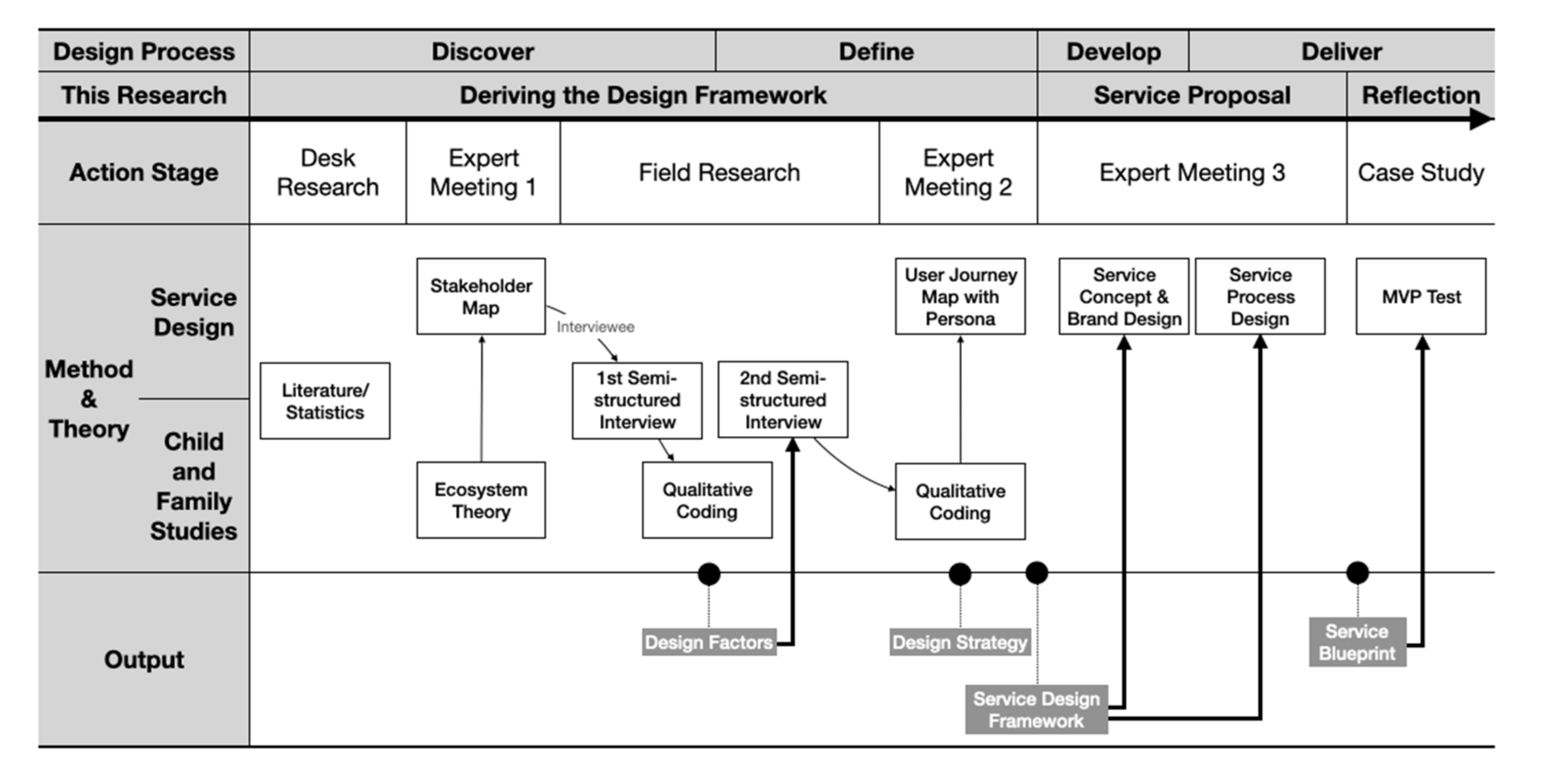
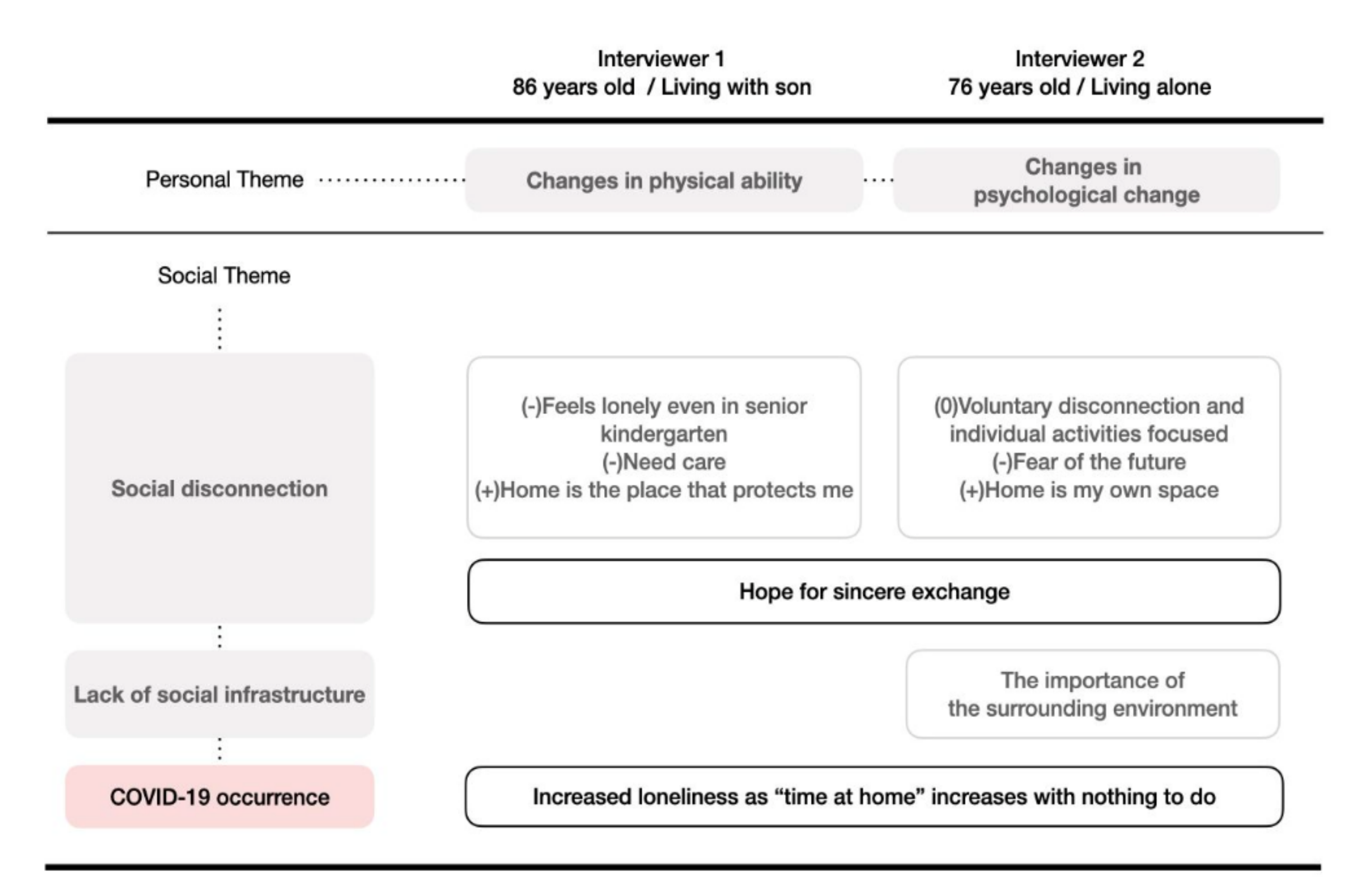
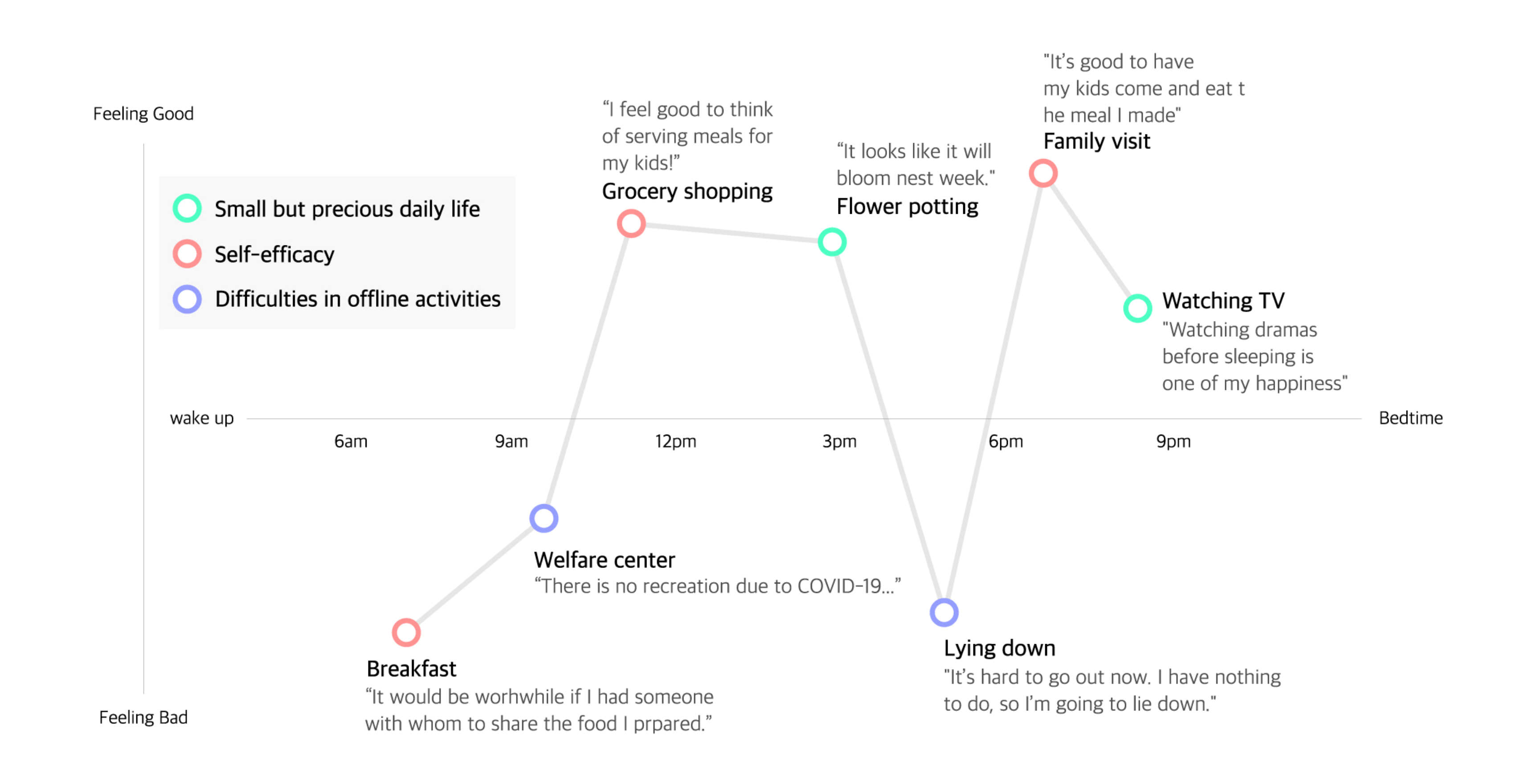
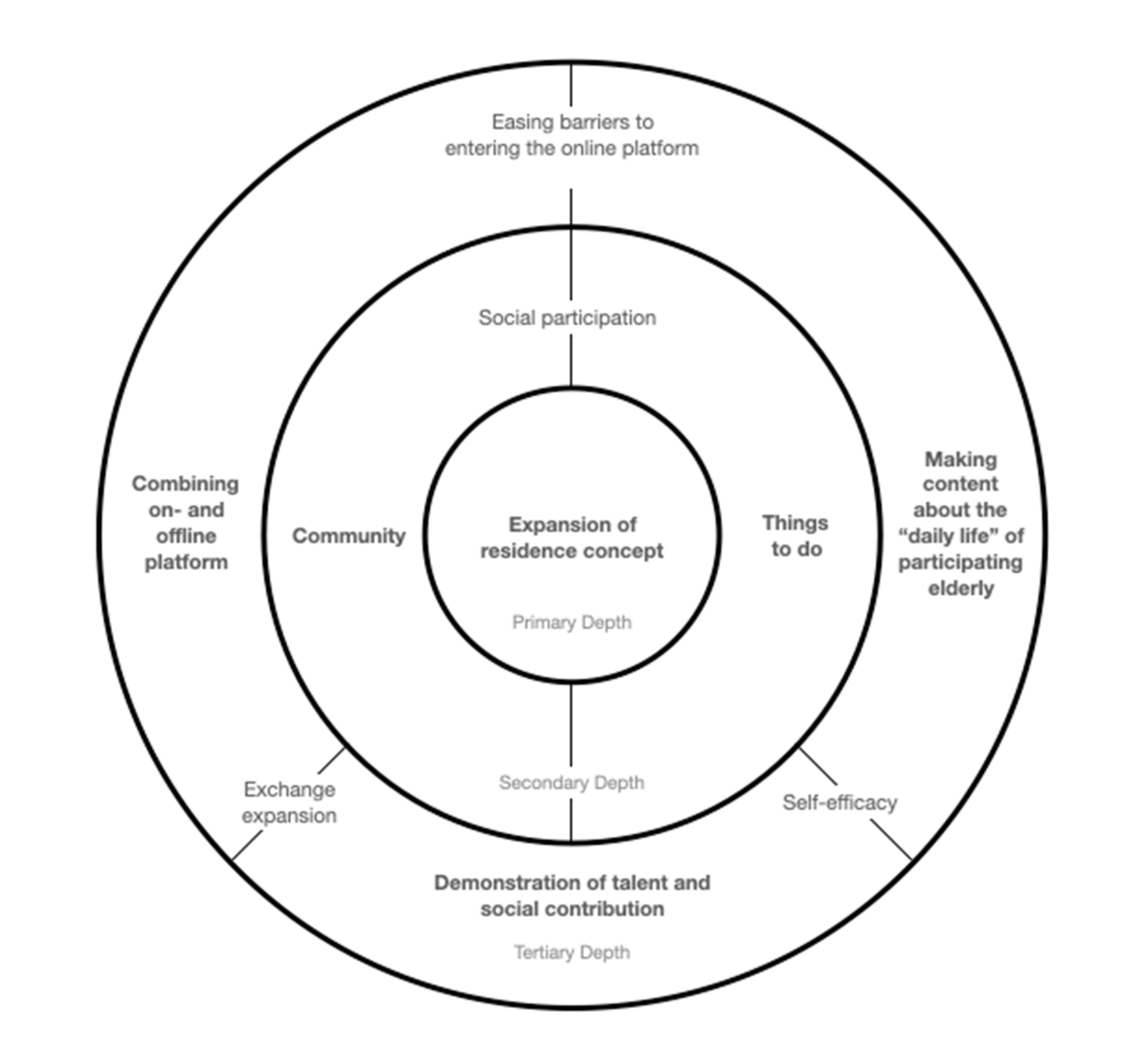

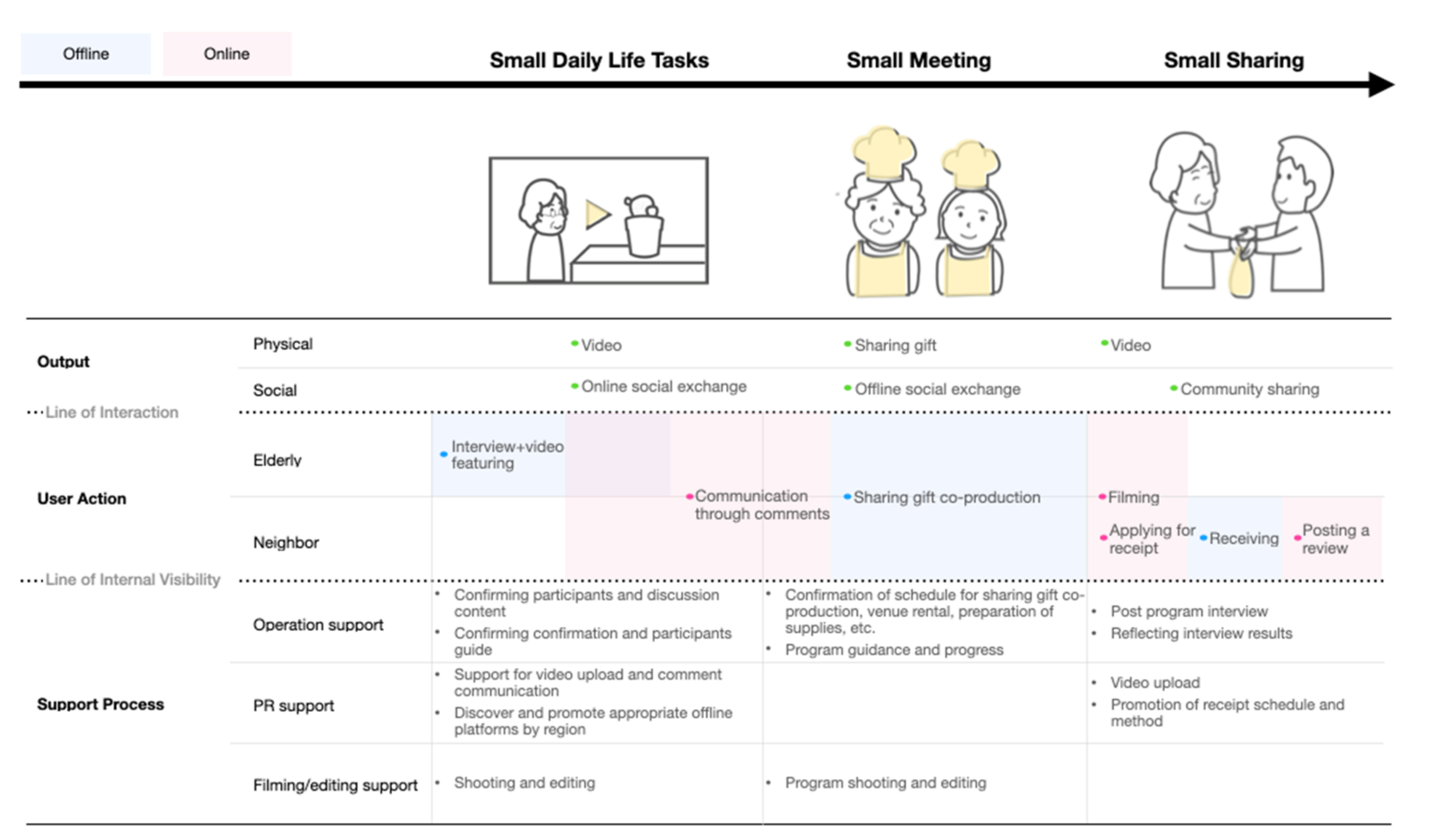

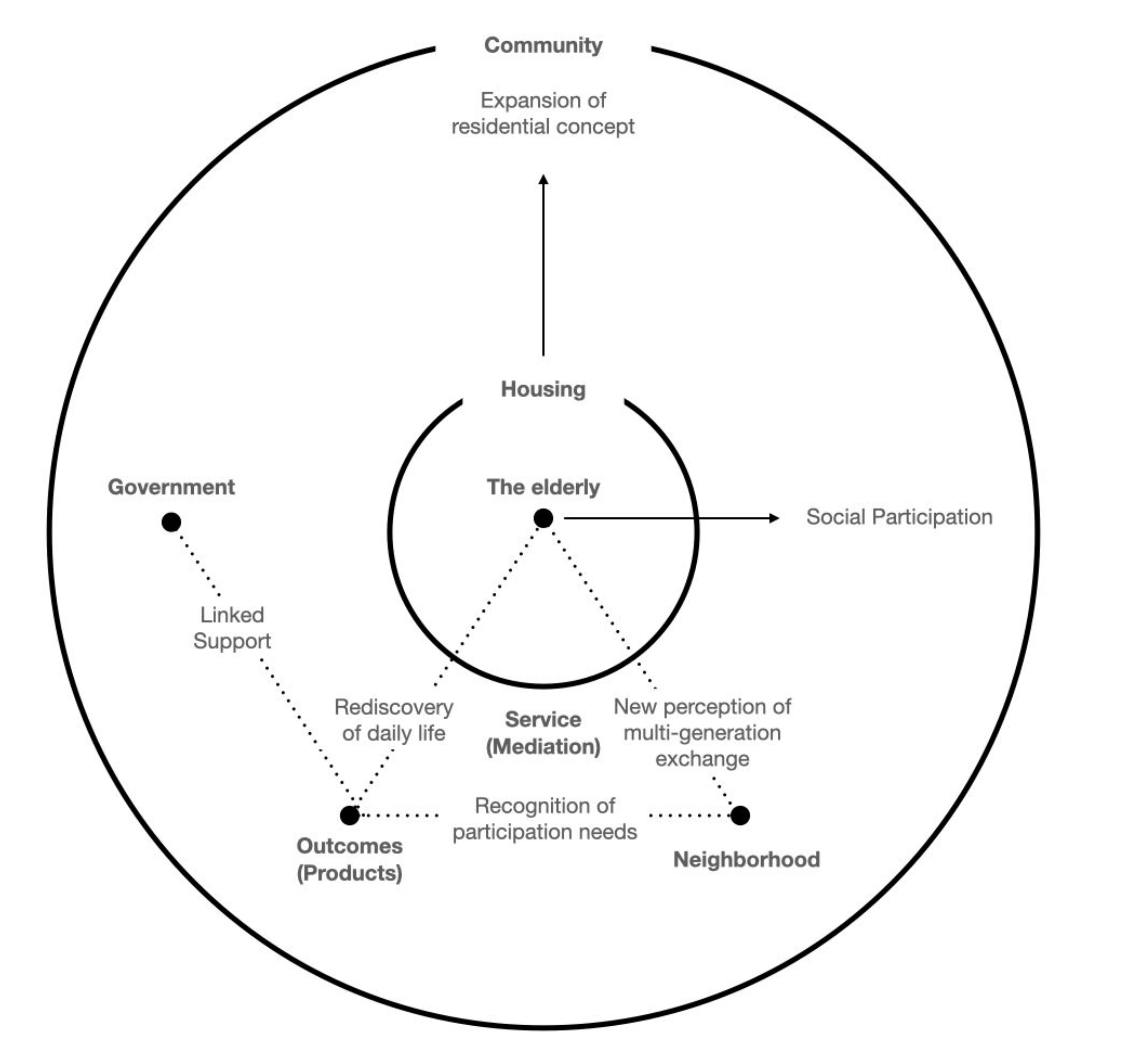
| Order | Subject | Age | Gender | Residence Type/ Working Facility | Cohabitating Family Members/ Special Matters |
|---|---|---|---|---|---|
| - | Senior 1 | 86 | Female | Apartment | One adult child |
| - | Senior 2 | 76 | Female | Apartment | Living alone |
| - | Adult child of Senior 1 | 50 | Male | Apartment | One elderly mother (Senior 1) |
| Order | Subject | Age | Gender | Residence Type/ Working Facility | Cohabitating Family Members/ Special Matters |
|---|---|---|---|---|---|
| - | Senior 1 | 86 | Female | Apartment | One adult child |
| - | Senior 2 | 89 | Female | Nursing hospital | One adult child, visits two to three times a month |
| - | Senior 3 | 76 | Female | A single house | Living alone |
| - | Senior 4 | 75 | Female | Apartment | Living alone |
| - | Care worker | 66 | Male | Nursing hospital | Nine months of work at a medium-sized nursing hospital |
| Service Unit | Main Content | Service Provision Method | Note |
|---|---|---|---|
| Activities inside home | Sharing daily life | Online | Combined promoting by on- and offline |
| Activities outside home | Talent donation | Offline | - |
| Community activities | Sharing the results created through daily life and talent donation | Offline | - |
Publisher’s Note: MDPI stays neutral with regard to jurisdictional claims in published maps and institutional affiliations. |
© 2021 by the authors. Licensee MDPI, Basel, Switzerland. This article is an open access article distributed under the terms and conditions of the Creative Commons Attribution (CC BY) license (https://creativecommons.org/licenses/by/4.0/).
Share and Cite
Choi, S.; Kang, M.; Lee, Y.; Lee, S.-A.; Kim, H.K.; Lee, H.-K. Interdisciplinary Service Design Approach to Promote Sustainable Solutions in Social Complexity: Case Study on Korean Elderly Residential Stability during COVID-19. Appl. Sci. 2021, 11, 12009. https://doi.org/10.3390/app112412009
Choi S, Kang M, Lee Y, Lee S-A, Kim HK, Lee H-K. Interdisciplinary Service Design Approach to Promote Sustainable Solutions in Social Complexity: Case Study on Korean Elderly Residential Stability during COVID-19. Applied Sciences. 2021; 11(24):12009. https://doi.org/10.3390/app112412009
Chicago/Turabian StyleChoi, Suji, Miseon Kang, Yeseul Lee, Seol-Ah Lee, Hyoun K. Kim, and Hyun-Kyung Lee. 2021. "Interdisciplinary Service Design Approach to Promote Sustainable Solutions in Social Complexity: Case Study on Korean Elderly Residential Stability during COVID-19" Applied Sciences 11, no. 24: 12009. https://doi.org/10.3390/app112412009
APA StyleChoi, S., Kang, M., Lee, Y., Lee, S.-A., Kim, H. K., & Lee, H.-K. (2021). Interdisciplinary Service Design Approach to Promote Sustainable Solutions in Social Complexity: Case Study on Korean Elderly Residential Stability during COVID-19. Applied Sciences, 11(24), 12009. https://doi.org/10.3390/app112412009






